 
|
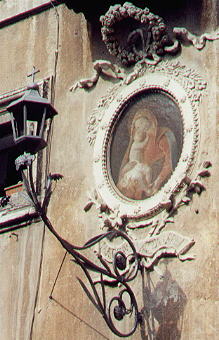 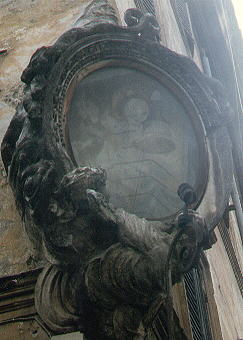 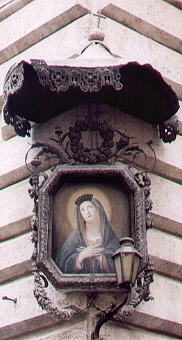 | ||
The Madonnelle were a form of popular devotion. In general the rich did not feel these images would add to the beauty and importance of their palaces and only a limited number of palaces show a sacred image. A miraculous event or just a happy event often led the inhabitants of a street or of a building to commemorate it by placing a little Madonna at the corner of the street. In the XVIIth century the development of stucco techniques made affordable to these people the framing of the image in a little stucco relief. Angels holding the image became a common subject of these reliefs or statues. Angels were a typical Baroque theme, but they were popular among the lower classes well into the XIXth century.
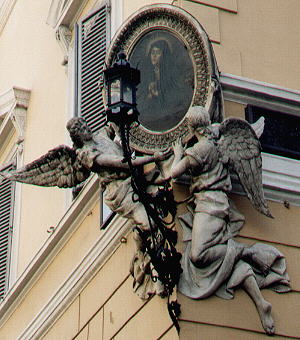 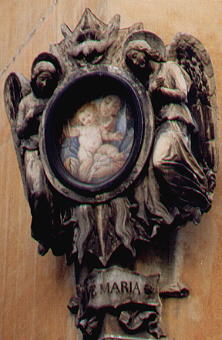 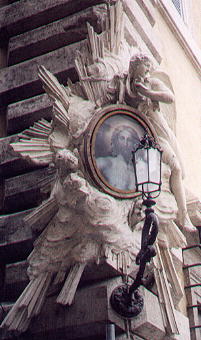 | ||
A little baldaquin, sometimes made with metal, gave the image some protection against rain. The more sophisticated stucco reliefs were painted in line with the Baroque tendency to mix painting with sculpture (and architecture).
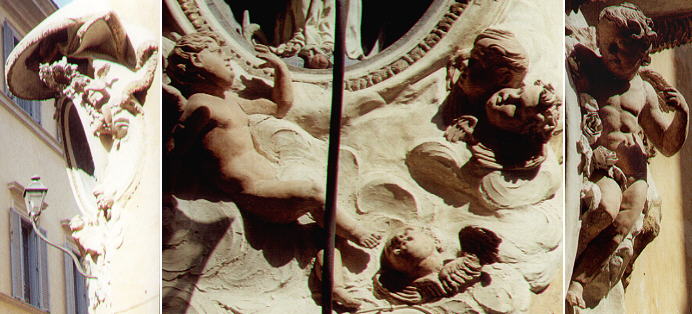 | ||
A certain number of images were made of rather large paintings, a memory perhaps of the Renaissance habit of painting the fašades of the palaces. In these cases the subject of the image was more complex and the painting was most likely the initiative of a brotherhood, if not of the pope. The first two images here below are both next to plaques with inscriptions celebrating the opening of a new street.
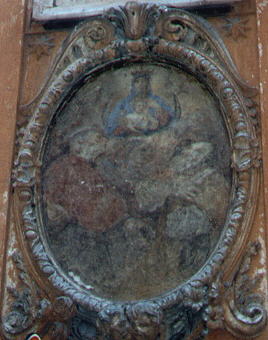 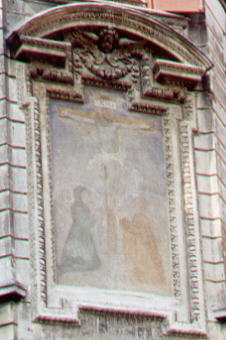 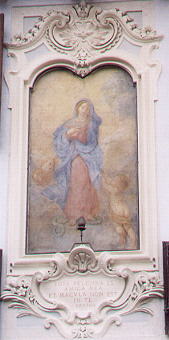 | ||
In some cases the stucco reliefs are so large and ornate that the sacred images are somewhat suffocated. Besides many painted images are almost unreadable. In general we know very little about who designed and executed these reliefs.
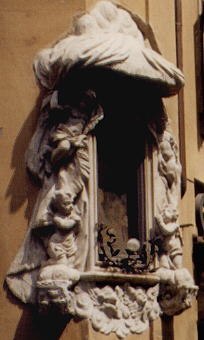 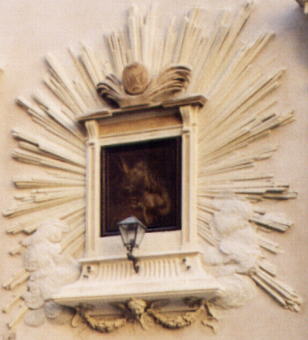 | ||
The large majority of the Madonnelle have a Baroque appearance, even though they were designed in the XIXth or even in the XXth century. In the late XIXth century, however a certain number of Madonnelle were designed having in mind Renaissance patterns.
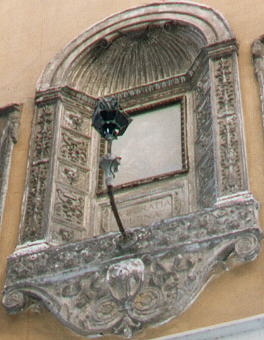 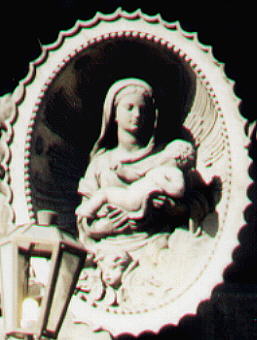 | ||
The image below shows an example of the simplest form of Madonnella, most likely the prevailing one until the XVth century. It is however a XXth century Madonnella.
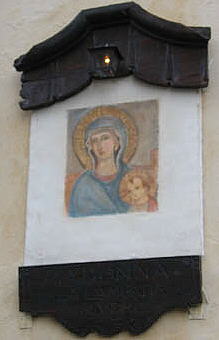 | ||
Directory
(for a map of the districts click here)
The images used as an icon and as a background for this page show the Madonna of Palazzo Panfilio.
Bibliography: Nica Fiori - Le Madonnelle di Roma - 1995 Newton Compton - Rome, Italy
Other Directories
![]()
Go to my Home
Page on Baroque Rome or to my Home Page on Rome
in the footsteps of an XVIIIth century traveller.
All images © 1999 - 2003 by Roberto Piperno. Write to romapip@quipo.it
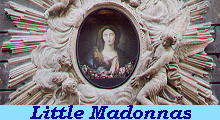 Little Madonnas
Little Madonnas